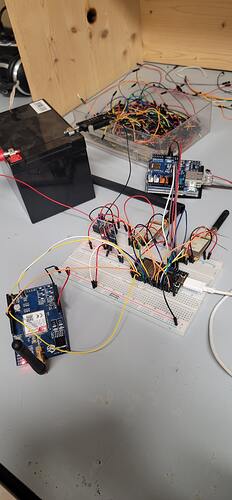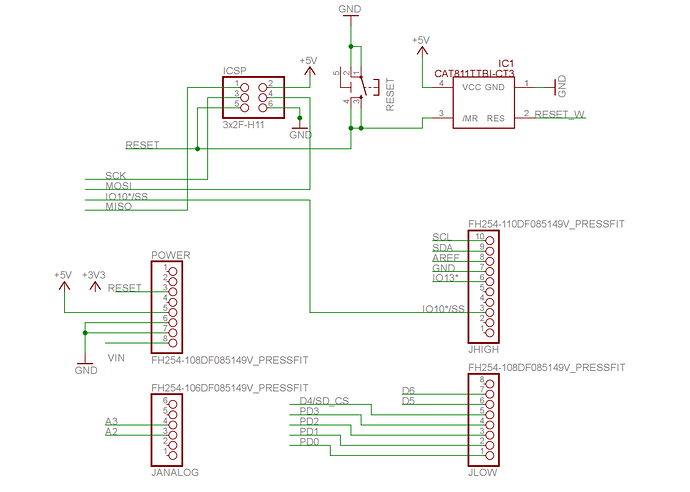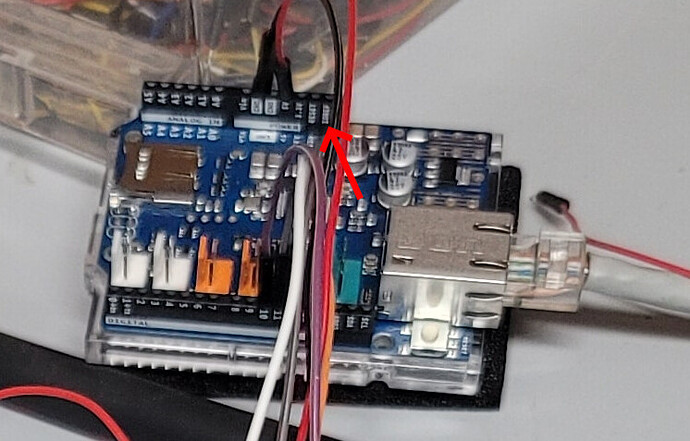I did a test with an arduino uno linked below with the WebClient example and it works on the first try.
Are we sure the library is the same?
Arduino Skatch
/*
Web client
This sketch connects to a website (http://www.google.com)
using an Arduino Wiznet Ethernet shield.
Circuit:
- Ethernet shield attached to pins 10, 11, 12, 13
created 18 Dec 2009
by David A. Mellis
modified 9 Apr 2012
by Tom Igoe, based on work by Adrian McEwen
*/
#include <SPI.h>
#include <Ethernet.h>
// Enter a MAC address for your controller below.
// Newer Ethernet shields have a MAC address printed on a sticker on the shield
byte mac = { 0xDE, 0xAD, 0xBE, 0xEF, 0xFE, 0xED };
// if you don’t want to use DNS (and reduce your sketch size)
// use the numeric IP instead of the name for the server:
//IPAddress server(74,125,232,128); // numeric IP for Google (no DNS)
char server = “www.google.com”; // name address for Google (using DNS)
// Set the static IP address to use if the DHCP fails to assign
IPAddress ip(192, 168, 0, 177);
IPAddress myDns(192, 168, 0, 1);
// Initialize the Ethernet client library
// with the IP address and port of the server
// that you want to connect to (port 80 is default for HTTP):
EthernetClient client;
// Variables to measure the speed
unsigned long beginMicros, endMicros;
unsigned long byteCount = 0;
bool printWebData = true; // set to false for better speed measurement
void setup() {
// You can use Ethernet.init(pin) to configure the CS pin
Ethernet.init(10); // Most Arduino shields
//Ethernet.init(5); // MKR ETH shield
//Ethernet.init(0); // Teensy 2.0
//Ethernet.init(20); // Teensy++ 2.0
//Ethernet.init(15); // ESP8266 with Adafruit Featherwing Ethernet
//Ethernet.init(33); // ESP32 with Adafruit Featherwing Ethernet
// Open serial communications and wait for port to open:
Serial.begin(9600);
while (!Serial) {
; // wait for serial port to connect. Needed for native USB port only
}
// start the Ethernet connection:
Serial.println(“Initialize Ethernet with DHCP:”);
if (Ethernet.begin(mac) == 0) {
Serial.println(“Failed to configure Ethernet using DHCP”);
// Check for Ethernet hardware present
if (Ethernet.hardwareStatus() == EthernetNoHardware) {
Serial.println(“Ethernet shield was not found. Sorry, can’t run without hardware. :(”);
while (true) {
delay(1); // do nothing, no point running without Ethernet hardware
}
}
if (Ethernet.linkStatus() == LinkOFF) {
Serial.println(“Ethernet cable is not connected.”);
}
// try to congifure using IP address instead of DHCP:
Ethernet.begin(mac, ip, myDns);
} else {
Serial.print(" DHCP assigned IP ");
Serial.println(Ethernet.localIP());
}
// give the Ethernet shield a second to initialize:
delay(1000);
Serial.print(“connecting to “);
Serial.print(server);
Serial.println(”…”);
// if you get a connection, report back via serial:
if (client.connect(server, 80)) {
Serial.print("connected to ");
Serial.println(client.remoteIP());
// Make a HTTP request:
client.println(“GET /search?q=arduino HTTP/1.1”);
client.println(“Host: www.google.com”);
client.println(“Connection: close”);
client.println();
} else {
// if you didn’t get a connection to the server:
Serial.println(“connection failed”);
}
beginMicros = micros();
}
void loop() {
// if there are incoming bytes available
// from the server, read them and print them:
int len = client.available();
if (len > 0) {
byte buffer[80];
if (len > 80) len = 80;
client.read(buffer, len);
if (printWebData) {
Serial.write(buffer, len); // show in the serial monitor (slows some boards)
}
byteCount = byteCount + len;
}
// if the server’s disconnected, stop the client:
if (!client.connected()) {
endMicros = micros();
Serial.println();
Serial.println(“disconnecting.”);
client.stop();
Serial.print(“Received “);
Serial.print(byteCount);
Serial.print(” bytes in “);
float seconds = (float)(endMicros - beginMicros) / 1000000.0;
Serial.print(seconds, 4);
float rate = (float)byteCount / seconds / 1000.0;
Serial.print(”, rate = “);
Serial.print(rate);
Serial.print(” kbytes/second”);
Serial.println();
// do nothing forevermore:
while (true) {
delay(1);
}
}
}
Serial Monitor Response:
Initialize Ethernet with DHCP:
12:56:22.989 → DHCP assigned IP 10.0.0.31
12:56:23.966 → connecting to www.google.com…
12:56:24.013 → connected to 216.58.209.36
12:56:24.202 → HTTP/1.1 200 OK
12:56:24.202 → Content-Type: text/html; charset=ISO-8859-1
12:56:24.249 → Date: Sat, 12 Feb 2022 11:56:24 GMT
12:56:24.295 → Expires: -1
12:56:24.342 → Cache-Control: private, max-age=0
12:56:24.342 → P3P: CP=“This is not a P3P policy! See P3P and Google's cookies - Google Account Help for more info.”
12:56:24.435 → Server: gws
12:56:24.435 → X-XSS-Protection: 0
12:56:24.481 → X-Frame-Options: SAMEORIGIN
12:56:24.481 → Set-Cookie: NID=511=praXIhaK2cF2rm7uFh1cxAOdIXmZ1oz44p_w1LeQD5jyFJt6nTG90mU4Z02sVWNANTlWvV7uvI4S_OyQCVyd9dh8ZUh7BsPoXNKRdGemVzcwaPjUN-SFgF9d4pgfYHy8ML9MCBWhBONELsa1w2Uha3DwvEwAd4JL2qrnPvv28lo; expires=Sun, 14-Aug-2022 11:56:24 GMT; path=/; domain=.google.com; HttpOnly
12:56:24.763 → Accept-Ranges: none
12:56:24.810 → Vary: Accept-Encoding
12:56:24.810 → Connection: close
12:56:24.857 → Transfer-Encoding: chunked
12:56:24.857 →
12:56:24.857 → 3478
12:56:24.857 → <!doctype html>arduino - Cerca con Google(function(){
12:56:25.137 → document.documentElement.addEventListener(“submit”,function(b){var a;if(a=b.target){var c=a.getAttribute(“data-submitfalse”);a=“1”===c||“q”===c&&!a.elements.q.value?!0:!1}else a=!1;a&&(b.preventDefault(),b.stopPropagation())},!0);document.documentElement.addEventListener(“click”,function(b){var a;a:{for(a=b.target;a&&a!==document.documentElement;a=a.parentElement)if(“A”===a.tagName){a=“1”===a.getAttribute(“data-nohref”);break a}a=!1}a&&b.preventDefault()},!0);}).call(this);(function(){
12:56:25.652 → var a=window.performance;window.start=Date.now();a:{var b=window;if(a){var c=a.timing;if(c){var d=c.navigationStart,f=c.responseStart;if(f>d&&f<=window.start){window.start=f;b.wsrt=f-d;break a}}a.now&&(b.wsrt=Math.floor(a.now()))}}window.google=window.google||{};var h=function(g){g&&g.target.setAttribute(“data-iml”,Date.now())};document.documentElement.addEventListener(“load”,h,!0);google.rglh=function(){document.documentElement.removeEventListener(“load”,h,!0)};}).call(this);(function(){window.google.erd={jsr:1,bv:1529,de:true};})();(function(){var sdo=false;var mei=10;
12:56:26.258 → var f=this||self;var g,h,k=null!==(g=f.mei)&&void 0!==g?g:1



